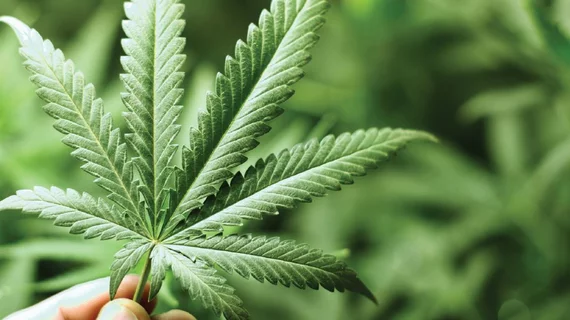Marijuana use linked to heart rhythm issues in older adults
Marijuana use among older adults is associated with a heightened risk of atrial and ventricular arrhythmias, according to new research published in the American Journal of Cardiology.[1]
“Marijuana is widely used across the United States, and marijuana use has increased from 2.4% in 2015 to 4.2% in 2018 among adults aged ≥65 years,” wrote first author Barbara N. Harding, PhD, with the Barcelona Institute of Global Health, and colleagues. “Marijuana use increases sympathetic nervous system activity and inhibits cardiac parasympathetic innervation, resulting in elevated heart rate, elevated blood pressure, and an increase in myocardial oxygen demand.”
Harding et al. tracked data from the Multi-Ethnic Study of Atherosclerosis (MESA), focusing on data from nearly 1,500 participants. All participants were between the ages of 45 and 84 years old and free of cardiovascular disease when they first enrolled in MESA from 2000 to 2002. After enrollment, follow-up examinations occurred every two to six years. Each individual underwent at least 24 hours of extended electrocardiographic (ECG) monitoring.
Each patient was asked several questions about marijuana use after their sixth examination. They also reported other key details about their lifestyle.
Ten percent of study participants reported prior marijuana use. While 28.5% of participants were current users, 50.7% reported prior use. The remaining participants did not specify the timing of their marijuana use.
Marijuana users, whether they were still using it or had done so in the past, tended to be younger than individuals who had never used marijuana. They were also more likely to be men and/or have a history of smoking cigarettes.
Overall, older adults faced a “greater burden of atrial and ventricular arrhythmias” if they were current marijuana users. More frequent users, the authors explained, were linked to a greater risk of ventricular arrhythmias.
“We expected marijuana use close to the time of ECG monitoring to be the most relevant,” the authors wrote. “This was confirmed in our results, with point estimates increased among the majority of associations with current marijuana smokers, whereas the same was not true for past users. These findings may reflect acute changes in arrhythmia risk occurring after marijuana use.”
The authors noted that they “did not find compelling evidence to suggest an increased risk of arrhythmias when assessing past use of marijuana.” This could mean the risks linked to marijuana use subside over time, but there were also signs in the research that pointed to premature ventricular contractions among past users.
Though the team hoped to learn more about the relationship between marijuana use and atrial fibrillation, the study’s sample power “was not adequate enough.”
Related Heart Rhythm and Marijuana Use Content:
NOACs comparable to warfarin when treating AFib patients with valvular heart disease
Risk of recurrent stroke 48% higher among young marijuana users
Recent marijuana use increases risk of serious stroke complication
Reference:

